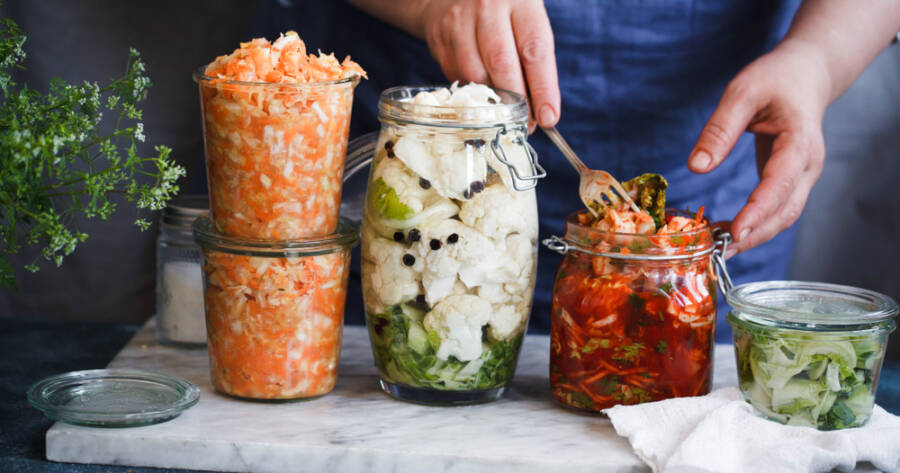In recent years, fermented foods have risen from niche health food to mainstream kitchen staples and for good reason. Not only do they add bold, complex flavors to meals, but they also come packed with gut-friendly probiotics and natural nutrients that support digestion and immunity. From tangy kimchi and kombucha to creamy kefir and miso, fermented foods are having a major moment on menus and in home kitchens around the world. Understand why fermentation has found new life in today’s health-conscious, flavor-driven culture.
What Is Fermentation?
Fermentation is a natural process where microorganisms like bacteria and yeast break down sugars and starches into acids, gases, or alcohol. This chemical transformation not only preserves food but also enhances its texture, taste, and nutritional profile.
Many of the foods we’ve loved for centuries, cheese, yogurt, bread, beer, are all products of fermentation. The global revival of traditional fermented staples is reconnecting us with food’s deeper cultural roots while tapping into modern interest in gut health and bold flavors.
The Gut-Health Connection
The popularity of fermented foods is largely driven by a growing awareness of gut health. Our digestive systems are home to trillions of bacteria, collectively known as the gut microbiome, which play a crucial role in everything from digestion and nutrient absorption to mood and immune function.
Fermented foods contain probiotics, which are beneficial bacteria that help restore and balance the gut flora. Regular consumption of probiotic-rich foods has been linked to improved digestion, reduced inflammation, better mood regulation, and even stronger immunity.
Unlike supplements, fermented foods provide these probiotics in a natural form, often alongside prebiotics (the fibers that feed good bacteria), vitamins, and enzymes that enhance digestion.
Fermented Foods Around the World
One of the most fascinating aspects of fermentation is its global heritage. Nearly every culture has its own fermented favorites:
- Kimchi: A spicy Korean side dish made from fermented cabbage and radishes
- Sauerkraut: German fermented cabbage, often used as a tangy sandwich topping
- Kombucha: A fizzy fermented tea known for its slightly sour flavor and gut-boosting properties
- Miso: A savory Japanese paste made from fermented soybeans, used in soups and marinades
- Kefir: A probiotic-rich fermented milk drink with a thinner consistency than yogurt
- Tempeh: A firm Indonesian soy product, often used as a protein-packed meat alternative
These foods offer both health benefits and exciting flavor profiles, ranging from sour and salty to funky and umami-rich.
Fermentation at Home
Fermenting foods at home has become a popular DIY hobby, especially for those who enjoy experimenting in the kitchen. The process requires just a few ingredients, some patience, and basic equipment like glass jars and clean utensils.
Popular beginner-friendly projects include:
- Homemade pickles with garlic and dill
- Sourdough bread made with wild yeast starter
- Fermented carrots or cabbage with sea salt and herbs
- Kombucha brewing kits with flavor add-ins like ginger or berries
Making your own fermented foods lets you control the ingredients and customize flavors while reducing food waste and adding diversity to your diet.
More Than a Trend
What started as a food preservation method is now being celebrated for its culinary depth and health-enhancing properties. Chefs, nutritionists, and home cooks alike are embracing fermented foods not just for the health halo, but for the rich flavors they bring to everyday meals.
Restaurants are incorporating house-fermented sauces, pickles, and beverages into their menus. Grocery stores are expanding their fermented offerings beyond yogurt to include kimchi, kombucha, and fermented plant-based options. Even cocktail bars are experimenting with fermented ingredients for more complex flavors.
A Flavorful Future with Fermentation
Fermented foods are here to stay—and for good reason. They are delicious, versatile, and packed with benefits for your body and your taste buds. As the fermentation movement continues to grow, it’s clear that gut-friendly eating doesn’t have to be bland or boring. In fact, it might just be the tastiest wellness trend yet.
So go ahead, embrace the funk. Your gut (and your palate) will thank you.

